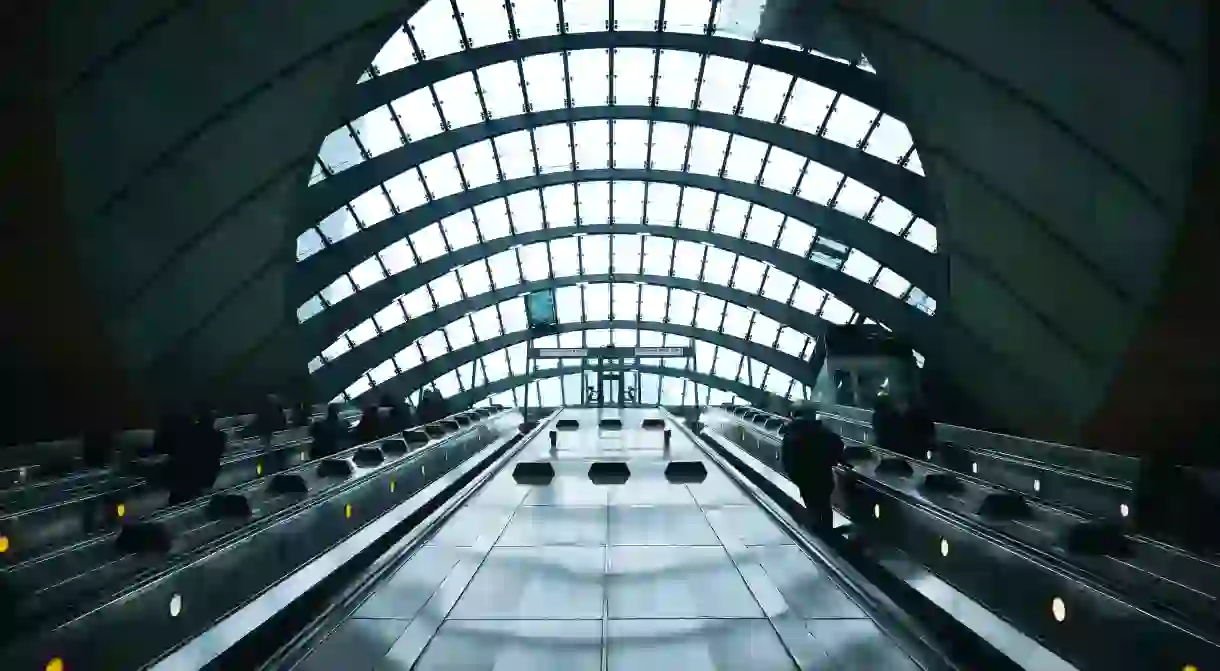London's Most Beautiful Underground Stations

While rushing to get to their train on the underground, London’s commuters are often guilty of not taking a moment to stop and take a look at at the magnificent and varied architecture of the city’s many different stations that surrounds them every day. Since the transport network opened over 160 years ago, more than 270 stations have been built throughout the capital city, each with its own unique design and characteristics – and plenty of them are as beautiful and interesting as the famous sights that the trains carry thousands of tourists to and from.
King’s Cross St Pancras Station
One of the most famous stops on the underground, this Monopoly square station also serves the national rail network, as well as the Eurostar, taking people to Paris and beyond. It was originally designed in the 1850s, but a modernisation project brought it into the 21st century in 2012, adding its now famous spider web-like structure that opens out like a futuristic flower above the station’s open-plan concourse. For many people arriving into London via train, or on the tube from Heathrow, it’s one of the first parts of London they get to see – a hugely welcome sight after a lengthy journey.

Gloucester Road Station
While some of the underground’s stations are compared to art galleries, Gloucester Road takes things a little further by regularly hosting art exhibitions on one of its disused platforms. Although this isn’t a constant feature of the stop in South Kensington, it is always worth having a look to see if there’s anything there on display.
Recent exhibits have featured such art as an installation by British performance artist Monster Chetwynd called Pondlife, which featured large sculptures of wildlife, including frogs, salamanders, and lilies.
Other artistic highlights of London can be seen along these cultural tours of the city.

Notting Hill Gate Station
This station on the Circle and District line has been open since 1868 and is known for its symmetry, curves and great natural lighting. It’s also a very popular stop for visiting movie lovers, with plenty of scenes from the Hugh Grant and Julia Roberts romcom Notting Hill unsurprisingly filmed nearby.
The station was refurbished from 2010 to 2011, with new ceramic tiling added throughout the subway entrance.

Westminster Station
While above ground, Westminster is known as being the heart of the UK government, below it lies a labyrinthine warren of shiny, futuristic fixtures, twisting their way down towards the underground’s platforms. The brutalist masterpiece was completed in 1999 and has often been labelled as “dramatic” and “dystopian” by those making their way through the gleaming metal maze that contrasts so wonderfully with the harsh concrete blocks holding it all together. It’s also the closest stop to Big Ben and Westminster Abbey, so is a key station for visitors to London.
Tourists can take in those sights, among a whole host of others, as part of these tours of the city.

Gants Hill Station
One of the lesser-visited stops on the London underground is Gants Hill, which was designed by architect Charles Holden. Charles was clearly inspired by the ornate fixtures of the Moscow Metro while plotting this North East London stop, leading him to create a beautiful subterranean barrel vaulted concourse. What’s more, the station has no surface level buildings, meaning its splendour is kept entirely beneath ground, making it a real treat for any unsuspecting visitors making their way down to its platforms from the street above.

Angel Station
Angel is a fashionable area in North London with great pubs, comedy venues, restaurants and markets. Its underground station has the the longest escalator on the network and visitors are often wowed by the 197ft journey as they are carried from the ground upwards.

Canary Wharf Station
This station sits at the heart of London’s business district and it’s difficult not to feel like an incredibly important businessman while rising out of the darkness into the daylight on the escalators of this spectacular Norman Foster creation.
The arcing windows above the brutalist concrete curves, with the sunlight glimmering on the steel of the escalators, is truly a sight worth seeing. The station also serves the DLR line, which is a worthwhile tourist attraction in itself, with its carriages gliding effortlessly through the skyrises of London on its way towards Greenwich.
Anyone interested in finding London’s best structures can book one of these architectural tours.

Southwark Station
While walking through the space-aged corridors of Southwark station, it’s easy to forget that you’re in London, with the concourses feeling much more like the walkways of a spaceship from a dramatic science fiction franchise.
The upper concourse is undoubtedly the star of the show with its 52 ft high glass roof bathing it in natural light during the day. Beneath the roof is a 130ft long glass wall, made of more than 600 specially cut pieces of blue glass.

Waterloo Station
One of London’s busiest stations also happens to be one of its best looking. One of the key features of the Portland stone building is its victory arch, which was crafted as a memorial to the station’s staff that died during the First World War.
The decorative feature depicts both war and peace and has Britannia holding the torch of liberty above. The arch is found above the main entrance to the station, which also serves national rail routes.














